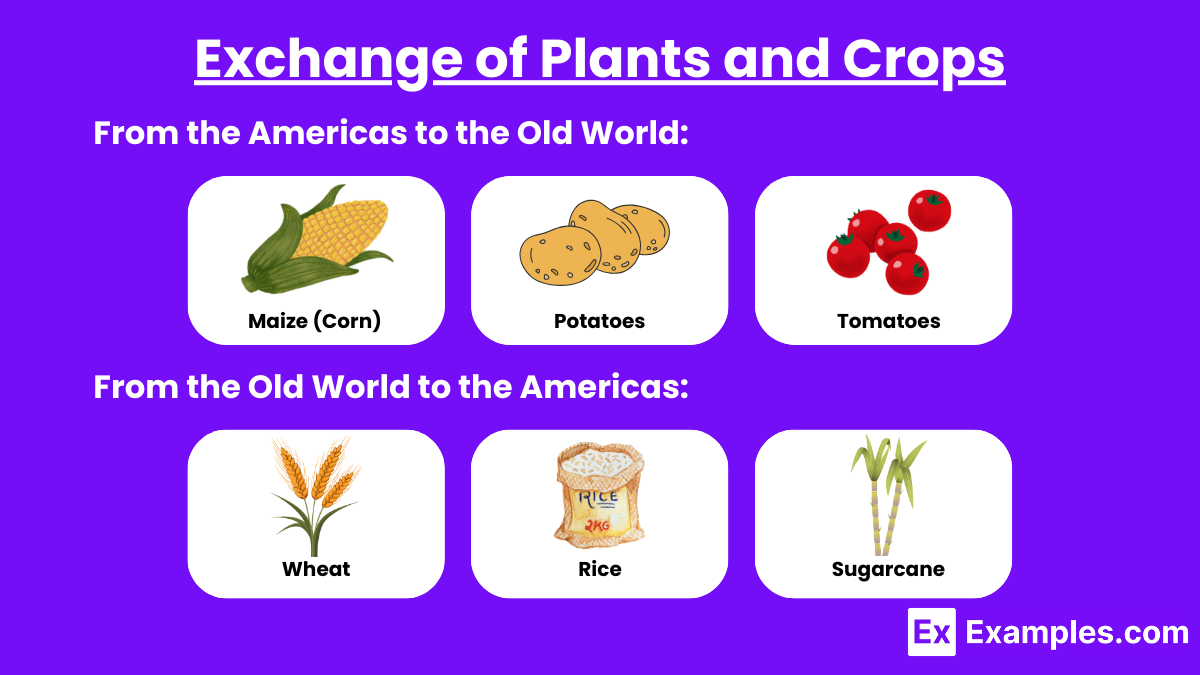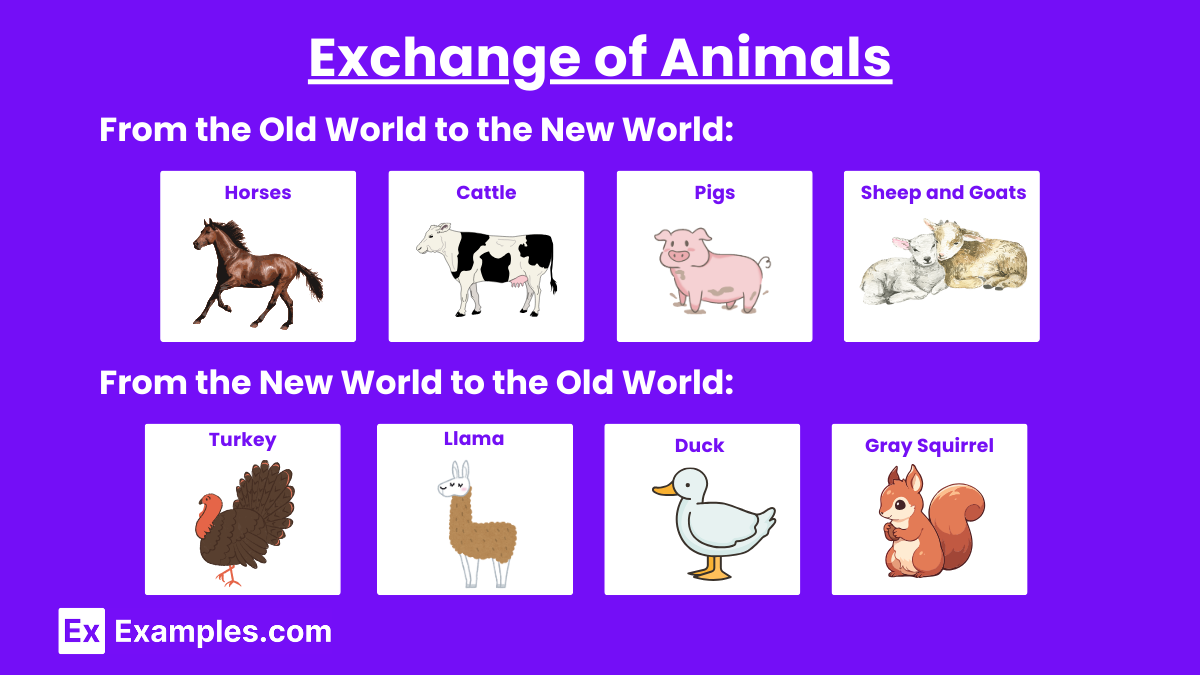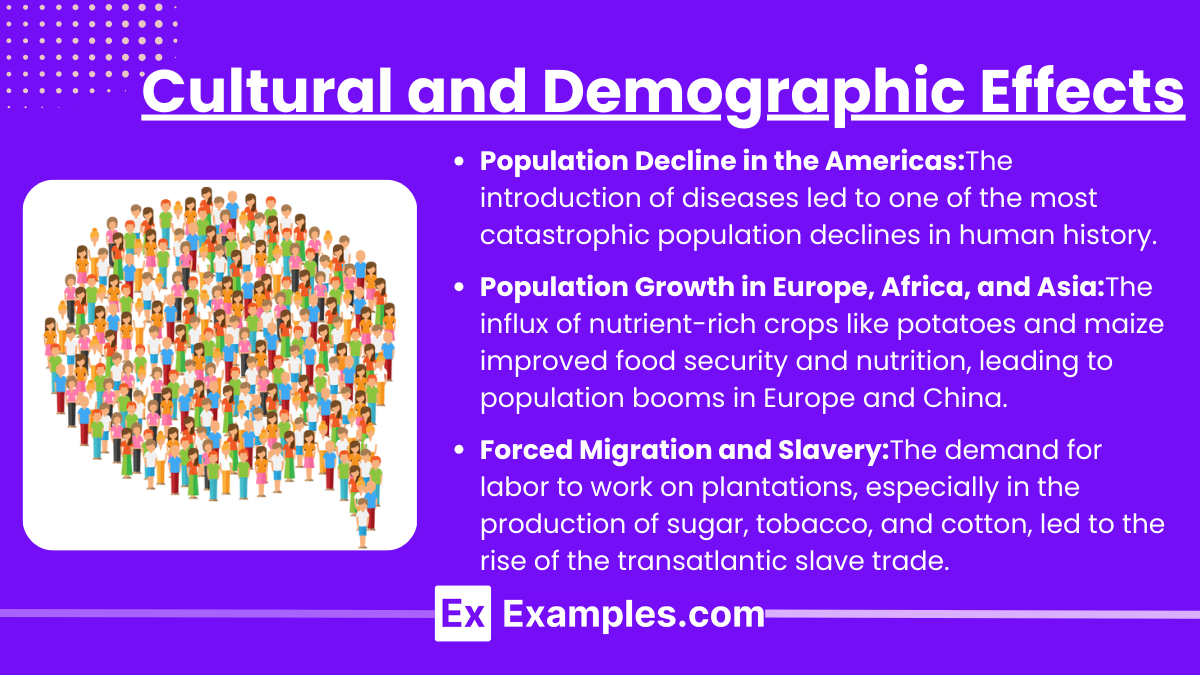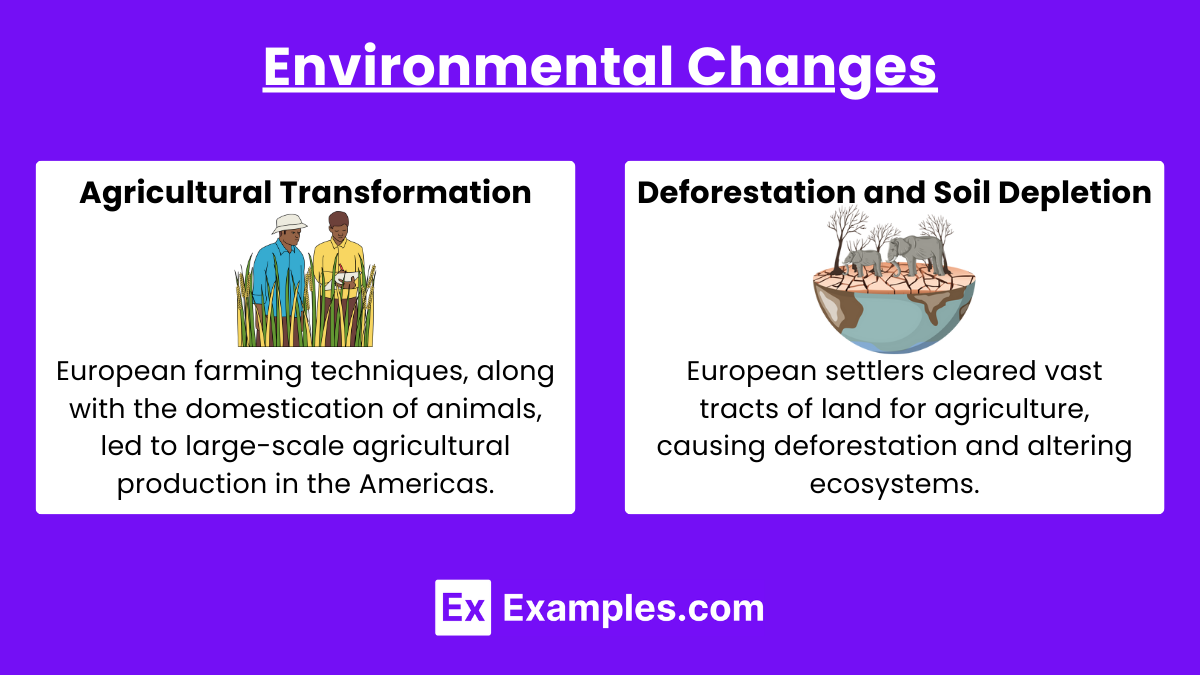The Columbian Exchange refers to the widespread transfer of plants, animals, diseases, people, and ideas between the Americas, Europe, Africa, and Asia following Columbus’s voyages in 1492. It revolutionized global ecosystems, economies, and cultures, reshaping diets, populations, and social structures, and marked the beginning of a truly interconnected world that dramatically transformed societies.
Learning Objective
In studying “The Columbian Exchange” for AP World History: Modern, you should learn to identify the biological and cultural exchanges between the Americas, Europe, Africa, and Asia, including the transfer of crops, animals, diseases, and technologies. Analyze the economic, social, and environmental impacts of these exchanges, including how they reshaped agriculture, diets, population growth, and labor systems. Evaluate the consequences of the Columbian Exchange on indigenous populations, the global economy, and the development of colonial systems, as well as its role in shaping modern globalization and trade networks.
1. Exchange of Plants and Crops

From the Americas to the Old World:
- Maize (Corn): One of the most influential crops, maize spread rapidly across Europe, Africa, and Asia, becoming a staple food source and dramatically altering agricultural practices.
- Potatoes: Potatoes played a significant role in European diets, especially in countries like Ireland, Russia, and Poland. Its ability to grow in diverse climates and soil conditions led to increased food security and contributed to population growth.
- Sweet Potatoes: Introduced to Asia, sweet potatoes became an important crop, particularly in China, where they were grown on a large scale.
- Tomatoes: These became an integral part of Mediterranean cuisine, fundamentally transforming dishes in Italy, Spain, and other regions.
From the Old World to the Americas:
- Wheat: This crop became a fundamental part of the diet in the Americas, leading to the development of bread as a staple food.
- Rice: Introduced to regions like the southern United States and Brazil, rice became an essential crop, especially in areas suitable for wetland cultivation.
- Sugarcane: Sugarcane cultivation transformed the Caribbean and Brazilian economies, leading to the establishment of large plantations and fueling the demand for enslaved labor from Africa.
2. Exchange of Animals

From the Old World to the New World:
- Horses: Perhaps the most transformative animal introduced to the Americas, horses revolutionized transportation, hunting, and warfare for Native American tribes, especially on the Great Plains.
- Cattle: Cattle provided meat, milk, and hides, and they became an essential part of the agricultural economy, especially in regions like the Pampas of Argentina and the American Midwest.
- Pigs: Pigs adapted well to the American environment and became a vital source of protein. They often roamed freely and rapidly increased in population.
- Sheep and Goats: These animals were important for wool, milk, and meat and contributed to the development of pastoral economies.
- Chickens: Chickens provided a steady source of eggs and meat, becoming a staple in many communities.
From the New World to the Old World:
- Turkey: Native to North America, turkeys were domesticated by indigenous people and brought to Europe by Spanish explorers in the 16th century. They became a staple in many cultures, especially for holiday feasts like Thanksgiving.
- Llama: Native to South America, particularly the Andean region, llamas were domesticated by the indigenous people of the Andes for transport and wool. They were introduced to other parts of the world for their usefulness as pack animals and their wool.
- Duck: Domesticated ducks come from various wild species, including the mallard. Ducks have been domesticated in different parts of the world for thousands of years and are raised for their eggs, meat, and feathers.
- Gray Squirrel: Native to North America, gray squirrels have been introduced to parts of Europe, where they have impacted local ecosystems, particularly competing with native species like the red squirrel.
3. Cultural and Demographic Effects

Population Decline in the Americas:
The introduction of diseases led to one of the most catastrophic population declines in human history. Entire civilizations, such as the Aztec and Inca Empires, were significantly weakened, facilitating European conquest and colonization.
Population Growth in Europe, Africa, and Asia:
The influx of nutrient-rich crops like potatoes and maize improved food security and nutrition, leading to population booms in Europe and China. These crops became essential to feeding the growing populations and contributed to urbanization and economic expansion.
Forced Migration and Slavery:
The demand for labor to work on plantations, especially in the production of sugar, tobacco, and cotton, led to the rise of the transatlantic slave trade. Approximately 12-15 million Africans were forcibly transported to the Americas, altering the demographic and cultural landscape of both Africa and the Americas.
4. Environmental Changes

Agricultural Transformation:
- Introduction of New Farming Techniques: European farming techniques, along with the domestication of animals, led to large-scale agricultural production in the Americas.
- Plantations: The establishment of cash-crop plantations, especially for sugarcane and tobacco, transformed the landscape and economy, leading to the exploitation of land and labor.
Deforestation and Soil Depletion:
- Deforestation: European settlers cleared vast tracts of land for agriculture, causing deforestation and altering ecosystems.
- Soil Depletion: Intensive farming practices led to soil erosion and depletion, affecting the fertility of the land.
led to the creation of new cultural identities, languages (such as Creole languages), and religious practices. For instance, African religious beliefs merged with Christianity, resulting in syncretic religions like Vodou in Haiti.
Examples
Example 1: Maize (Corn) to Europe
Maize spread across Europe, Africa, and Asia, becoming a staple crop. Its adaptability to various climates increased food supply, supporting population growth and agricultural diversification.
Example 2: Smallpox to the Americas
Smallpox, introduced by Europeans, devastated indigenous populations due to lack of immunity, resulting in a massive decline, weakening societies, and facilitating European conquest and colonization of the Americas.
Example 3: Horses to the Americas
Horses transformed Native American societies, revolutionizing transportation, hunting, and warfare. They enhanced mobility and efficiency, especially for Plains tribes, reshaping their way of life and social structures.
Example 4: Potatoes to Europe
Potatoes became a staple crop in Europe, especially in Ireland and Russia. Their high nutritional value and easy cultivation significantly contributed to population growth and improved food security.
Example 5: Sugarcane to the Americas
Sugarcane cultivation led to the establishment of large plantations in the Caribbean and Brazil, driving the demand for enslaved African labor and shaping colonial economies through profitable sugar production.
MCQs
Question 1
Which of the following crops introduced from the Americas had the most significant impact on European diets and population growth during the Columbian Exchange?
A) Sugarcane
B) Potatoes
C) Wheat
D) Bananas
Answer: (B) Potatoes
Explanation: The introduction of potatoes from the Americas to Europe had a transformative impact. Potatoes were nutrient-rich, easy to grow, and adaptable to various climates, leading to a reliable food source. This contributed to increased food security, higher caloric intake, and population growth, especially in countries like Ireland and Russia. Unlike other crops, potatoes played a key role in supporting Europe’s demographic expansion.
Question 2:
Which animal introduced by Europeans had the most profound effect on the lifestyle of Native American tribes, especially those living in the Great Plains?
A) Sheep
B) Cattle
C) Horses
D) Chickens
Answer: (C) Horses
Explanation: Horses, introduced by Europeans, significantly impacted the way of life for Native American tribes, particularly those in the Great Plains. Horses revolutionized transportation, hunting, and warfare, allowing tribes to travel greater distances, hunt buffalo more efficiently, and engage in more effective combat. The introduction of horses fundamentally changed social structures and economies, making them the most transformative animal brought to the Americas.
Question 3:
Which of the following statements best describes the impact of Old World diseases on the indigenous populations of the Americas during the Columbian Exchange?
A) They caused minor health issues with no long-term effects.
B) Indigenous populations developed immunity, limiting the impact.
C) Diseases like smallpox led to a significant population decline.
D) Diseases were quickly eradicated by indigenous medicine.
Answer: (C) Diseases like smallpox led to a significant population decline.
Explanation: Old World diseases, particularly smallpox, had a devastating effect on indigenous populations in the Americas. With no prior exposure or immunity, indigenous communities experienced mortality rates as high as 90%, leading to one of the most catastrophic population declines in history. This depopulation weakened indigenous societies, making them more vulnerable to European conquest and colonization, significantly altering the course of American history.

